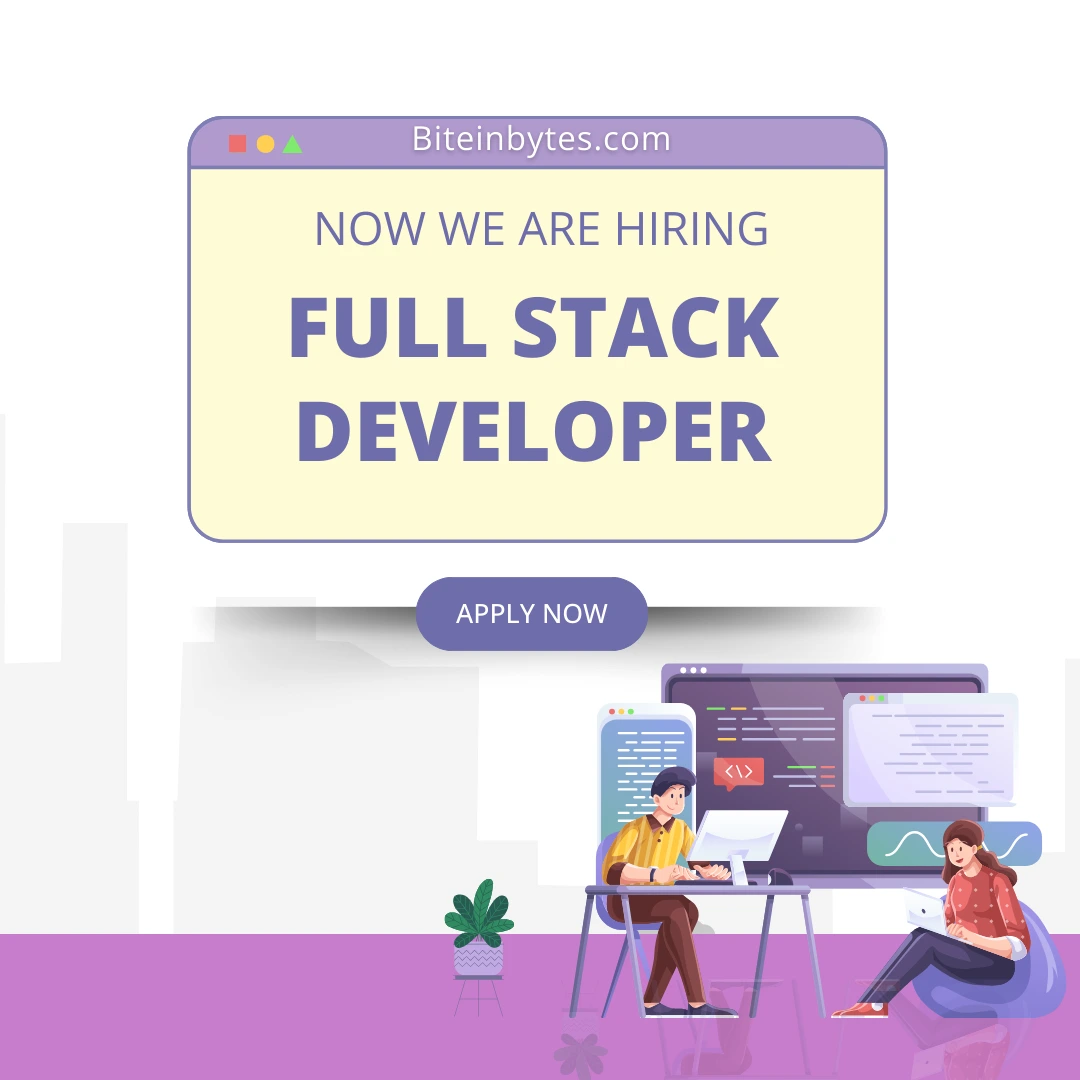The tech industry is evolving rapidly, and the need for full stack developer jobs has never been higher. Full stack developers are versatile professionals capable of building and maintaining both the front-end and back-end of web applications. This flexibility makes them invaluable assets for startups, SMEs, and enterprise-level companies alike.
If you’re exploring a career in tech or planning to upskill, understanding the landscape of Full Stack Developer Jobs, the technologies involved, and strategies to land your ideal role is essential. In this guide, we’ll cover everything from industry trends to practical tips for standing out in a competitive market.
Why Full Stack Developer Jobs Matter

The Role of a Full Stack Developer
A full stack developer is someone who bridges the gap between front-end and back-end development. They are responsible for:
- Front-end: Crafting responsive user interfaces, ensuring smooth UX, and implementing design elements using HTML, CSS, and JavaScript frameworks.
- Back-end: Developing server-side logic, managing databases, creating APIs, and ensuring the application runs efficiently and securely.
This combination of skills makes candidates highly sought-after in Full Stack Developer Jobs, as it allows developers to see the “big picture” of software projects, making them extremely valuable to employers.
Industry Demand and Growth
The demand for full stack developers is driven by several factors:
- The rise of web applications and e-commerce platforms.
- Businesses seeking cost-effective solutions with smaller development teams.
- The shift towards cloud computing and microservices requiring developers who understand the entire stack.
Statistics: According to the U.S. Bureau of Labor Statistics, software development roles are expected to grow by 22% by 2030, with Full Stack Developer Jobs among the most versatile and in-demand positions in the industry.
Pros of pursuing full stack developer jobs:
- High demand and competitive salaries (often $70k–$120k+ depending on location and experience)
- Ability to manage projects end-to-end
- Opportunities to work in diverse industries: finance, healthcare, entertainment, and more
Cons:
- Rapidly changing technologies require continuous learning
- Can be overwhelming to master both front-end and back-end simultaneously
- High responsibility for project delivery, sometimes under tight deadlines
Top Options and Tools for Full Stack Developers
Full stack development is technology-rich, and familiarity with key tools can significantly boost employability.
Front-End Tools
- HTML, CSS, JavaScript: The building blocks of web interfaces.
- React.js / Angular / Vue.js: Frameworks that enhance efficiency in building dynamic, interactive user experiences.
- Bootstrap / Tailwind CSS: Tools for creating responsive and visually appealing designs quickly.
Example: Many e-commerce platforms use React for dynamic product displays, paired with Tailwind CSS for responsive layouts.
Back-End Tools
- Node.js / Express.js: Popular for JavaScript-based server-side development.
- Python / Django / Flask: Excellent for rapid development, especially in data-driven applications.
- Ruby on Rails: Known for building MVPs quickly due to its convention-over-configuration philosophy.
Databases
- SQL: MySQL and PostgreSQL are industry standards for structured data.
- NoSQL: MongoDB or Firebase suit projects requiring flexible, document-based storage.
Other Essential Tools
- Version control: Git/GitHub is essential for collaboration and code management.
- API development & testing: Postman and Swagger allow testing endpoints efficiently.
- Containerization & deployment: Docker, Kubernetes, AWS, and Azure are increasingly vital for cloud-based development.
Pro tip: Professionals pursuing Full Stack Developer Jobs who understand DevOps concepts (CI/CD, deployment pipelines) are highly valued, as they can oversee projects from development to production.
How to Choose the Best Full Stack Developer Job
Finding the right full stack developer job requires balancing skills, career goals, and work culture.
1. Company Type
- Startup: Offers exposure to all development layers and faster learning opportunities, but may involve longer hours and uncertainty.
- Large Enterprise: Structured roles with mentorship and stability, though the work may be narrower in scope.
2. Technology Stack
Job descriptions vary widely. Some companies prefer MERN (MongoDB, Express.js, React, Node.js), while others focus on Python/Django or Ruby on Rails. Matching your skills to the in-demand stack in your target industry can increase your chances of landing interviews.
3. Career Growth Opportunities
Look for roles that allow:
- Upskilling and certification programs
- Exposure to cloud services, AI integration, or mobile development
- Pathways to senior, lead, or architect roles
Pros of careful job selection:
- Increased career satisfaction and growth potential
- Opportunity to specialize while maintaining full stack capabilities
- Access to mentorship and professional networks
Cons:
- Narrow focus may reduce immediate job options
- Certain stacks may become less popular, requiring retraining
Tips to Land a Full Stack Developer Job
- Build a Strong Portfolio: Show real-world projects demonstrating both front-end and back-end skills. Include GitHub links, live demos, or personal websites.
- Master Core Skills: HTML, CSS, JavaScript, a back-end language (Node.js, Python), and at least one framework.
- Certifications: Consider certifications like AWS Certified Developer, Microsoft Azure Developer, or freeCodeCamp full stack certification.
- Networking: Engage in online communities, attend tech meetups, participate in hackathons, and connect on LinkedIn.
- Interview Preparation: Practice coding challenges, system design, and algorithm questions. Platforms like LeetCode, HackerRank, and Codewars are excellent.
- Stay Updated: Follow tech blogs, newsletters, and new framework releases. Understanding emerging technologies like AI integration or serverless architectures can make you stand out.
Emerging Trends in Full Stack Development
- Serverless Architecture: Increasingly popular for scalable applications without managing server infrastructure.
- Microservices: Allows developers to break down applications into smaller, maintainable components.
- AI and Automation Tools: Full stack developers increasingly integrate AI-driven features like chatbots, recommendation engines, or analytics dashboards.
Keeping pace with these trends can enhance your resume and make you more competitive in the job market.
Conclusion
Full stack developer jobs offer a dynamic and highly rewarding career path, blending creativity, problem-solving, and technical expertise. By building strong skills across front-end, back-end, and databases, staying updated with industry trends, and strategically choosing the right opportunities, you can accelerate your career growth and secure a versatile, high-demand role in tech.
Whether you’re starting as a beginner or transitioning from a specialized role, gaining practical experience, committing to continuous learning, and building a strong professional network are essential steps to succeed in Full Stack Developer Jobs.
FAQ – Full Stack Developer Jobs
What skills do I need for full stack developer jobs?
Core skills include front-end (HTML, CSS, JavaScript), back-end (Node.js, Python, Ruby), database management, APIs, and version control.
Are full stack developer jobs in demand?
Yes, demand continues to grow as companies prefer versatile developers capable of handling full project stacks.
Can I get a full stack developer job without a degree?
Absolutely. Demonstrated skills, portfolio projects, certifications, and hands-on experience often outweigh formal education.
How much can I earn as a full stack developer?
Salaries vary by experience, location, and company size, but average ranges are $70k–$120k+ annually.
Should I specialize or remain full stack?
It depends on career goals. Full stack offers flexibility and broader opportunities, while specialization can lead to higher pay in niche areas.
